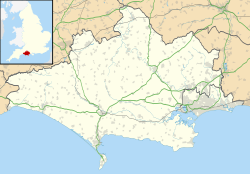| Kington Magna | |
|---|---|
 All Saints' Church, Kington Magna | |
Location within Dorset | |
| Population | 389 (2011) [1] |
| OS grid reference | ST765232 |
| Unitary authority | |
| Ceremonial county | |
| Region | |
| Country | England |
| Sovereign state | United Kingdom |
| Post town | GILLINGHAM |
| Postcode district | SP8 |
| Dialling code | 01747 |
| Police | Dorset |
| Fire | Dorset and Wiltshire |
| Ambulance | South Western |
| UK Parliament | |
Kington Magna is a village and civil parish in the Blackmore Vale area of Dorset, England, about 3+1⁄2 miles (5.5 kilometres) southwest of Gillingham.

